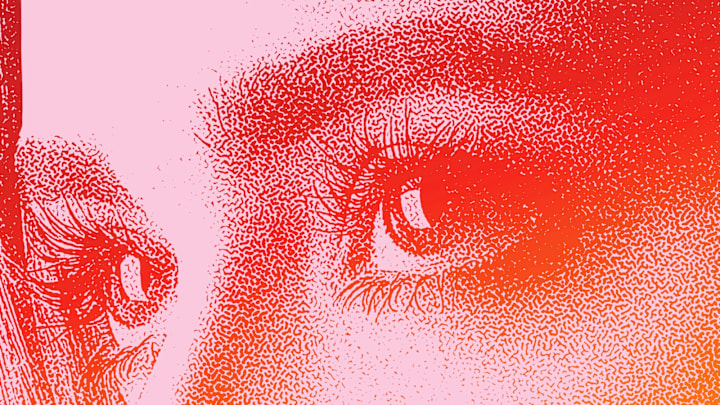Every generation has its quirks, and as we increasingly live our lives online, many more of them are coming to light. Millennials, for example, have been accused of something called “the Millennial pause,” a brief period of time between when a video starts and when they start speaking. (According to Newsweek, it’s a hangover from platforms like Snapchat, where videos didn’t begin immediately.) And Generation Z has the “Gen Z shake,” where they start their videos before they’ve set their phones down (or picked them up), leading to a visible tremor of the video.
But the latest curious Gen Z characteristic setting social media on fire is the so-called “Gen Z stare,” which people have been arguing about ever since it was identified.
What’s the “Gen Z stare”—and why are people talking about it?
Although the precise years often differ depending on who you talk to, Gen Zers are typically said to have been born between the late 1990s and the early 2000s; 1997–2012 is a fairly standard definition of the Gen Z window, which lies between Millennials and Generation Alpha.
Recently, Gen Zers (or “Zoomers,” as they’re sometimes called) have been accused of adopting a trait in social situations that has become known as the “Gen Z stare”—a kind of blank, uncommunicative, middle-distance stare into the void. Gen Zers themselves acknowledge that the stare is a real thing, while Boomers, Gen Xers, and Millennials seem to have begun picking up on it because, with many Gen Zers now in their early-to-mid-twenties, social encounters with them in the workplace, customer service roles, and all kinds of other face-to-face situations are becoming increasingly common. So the debate surrounding the Gen Z stare isn’t about whether or not it exists, but how it’s used—and where on earth it came from.
Gen Z vs. The World
Ask a Gen Zer, and they’ll likely tell you that the stare is a response to someone saying or doing something so stupid that it warrants a blankly contemptuous silence.

Viral TikTok skits of Gen Zers having to deal with Boomers not knowing when to take their card back out of the reader, for instance, or Millennials failing to listen to exasperated baristas, suggest that—from the Zoomer perspective, at least—the stare is a fitting response to having to deal with inane behavior in customer-facing situations.
“The Gen Z stare is basically us saying the customer is not always right,” TikTok creator Efe Ahworegba told The New York Times after her video about an encounter with a customer racked up millions of views.
From the Millennial, Gen X, and Boomer generations’ point of view, though, the Gen Z stare is a symptom of something deeper: an overall lack of social skills and inability to make small talk.
The World vs. Gen Z
According to the website Know Your Meme, the current discourse about the Gen Z stare began in July 2024, when TikToker @meghan.alessi posted a video noting that, whenever she has an encounter with Gen Zer, “they just stare at you.”
Her post sparked a debate in the comments. As other users noticed the phenomenon and shared their own experiences of dealing with Gen Z, people began to put forward theories to explain the origin of the stare.
According to The New York Times, everything from social anxiety to iPad usage and even vaping has been suggested as a possible cause of the Gen Z stare. Others have suggested that because Zoomers were the first generation to grow up in the social media age, there may be a sense of self-consciousness and fear of being judged at play, rooted in an adolescence played out online for all to see.

With a reputation for having their eyes fixed on their phones and AirPods in their ears, Gen Zers have also been accused of developing a culture in which small talk is naturally shunned, and the norm instead is to keep yourself to yourself, and only speak when spoken to—inadvertently creating a conversational void and a kind of blank reticence that older generations might find off-putting. However, practically all debates about the origin of the Gen Z stare also end up taking into consideration another unavoidable factor: the coronavirus pandemic of the early 2020s.
If 1997–2012 is taken as the Generation Z window, then Zoomers were aged between 8 and 23 when the COVID-19 pandemic (and its ensuing lockdowns) hit in 2020. Spending your formative years in imposed isolation—shut away not just from other people in your age group, but from society as a whole—could well have had an impact on Zoomers’ ability to develop the kind of soft social skills, like small talk and breezy conversation, everyone else finds so ordinary. And the “Gen Z stare,” ultimately, just happens to be the most obvious symptom of precisely that.
Learn More About Generations:
